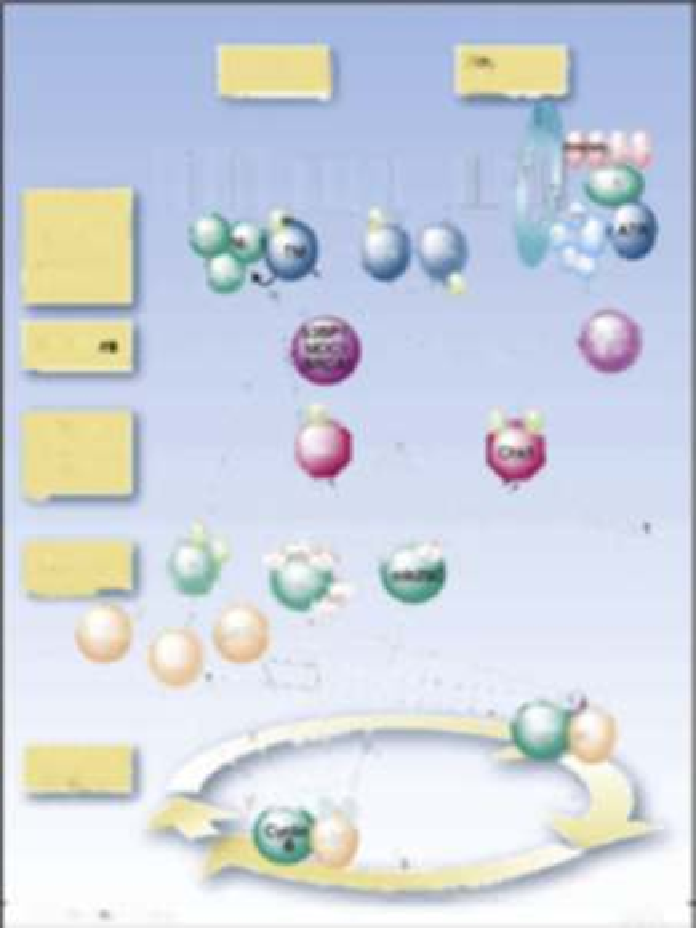Biology Reference
In-Depth Information
FIGURE 1.5
Molecular organization of the
checkpoint signaling network. Molecular orga-
nization of the checkpoint signaling network in
response to DNA DSBs and replicative stress.
Elements of the checkpoint signaling network
are categorized as sensors, proximal and distal
transducer kinases, mediators, effectors, and cell
cycle engines. Signals originate from the
damage sites (e.g., ATM in DSBs; ATR-ATRIP
with the sliding clamp “9-1-1 complex,” depic-
ted by the lifesaver shape in the replicative
stress portion of the image). Mediators track the
progress of the damage response by coordi-
nating the phosphorylation of ATM substrates.
Distal transducer kinases Chk1 and Chk2
amplify the signals from the sensors and prox-
imal transducers, phosphorylating a variety of
effectors, which can halt cell cycle progression
by inhibiting the cell cycle engines (CDKs).
Chk1 and Chk2 also mediate chromatin
remodeling and apopotosis by phosphorylating
downstream substrates. Key activating and
inhibitory phosphorylation sites are shown in
green and red, respectively. Adapted from Tse AN,
Carvajal R, Schwartz GK. Targeting checkpoint
kinase 1 in cancer therapeutics. Clin Cancer Res
2007;
(7): 1955-1960 and reproduced with
permission from the American Association for
Cancer Research.
13


